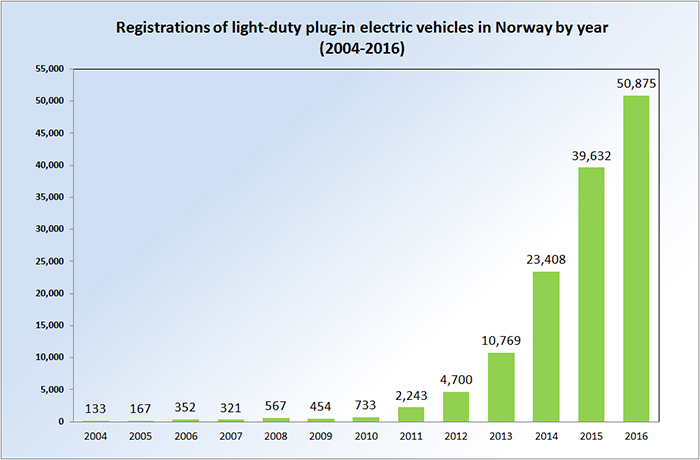Why are Norway at the cutting edge of EV deployment?
A quarter of all greenhouse gas emissions produced in Europe can be attributed to the transportation sector and figures have actually risen since 1990 levels. While there is no silver bullet solution to this, investment in Electric Vehicles (EVs) is one way of helping to bear the load.
Slowly but surely EVs are gaining a foothold across the globe. Like most emerging technology China is speeding up its production of EVs and is the largest market for the technology, while in Europe 9.7% of all new car sales in the Netherlands are attributable to EVs while that figure is 2.2% in France.
However, the nation really leading the way in terms of market share is Norway, which has the highest number of EVs (battery only) per capita in the world – with 215 EVs per 10,000 inhabitants, dwarfing the country in second place, the Netherlands, which has just 78. Battery Electric Vehicles (BEV) and Plug-in Hybrid Electric Vehicles (PHEV) accounted for a staggering 40% of new cars registered in 2016, and Norway’s tax incentives are geared to increase this to 100% by 2025.
Also, Norway was the first country in the world to have all-electric cars topping the new car sales monthly ranking. From September 2013 to November 2016, nine times a plug-in electric car has topped the country’s monthly ranking and in March 2014, the Tesla Model S also broke the 28-year-old record for monthly sales of a single model regardless of its power source.
As of November 2016, the Leaf ranked as the all-time best selling plug-in electric car in the country with 27,115 Leafs on Norwegian roads at the end of November 2016, followed by the Volkswagen e-Golf with 15,991 units, and the Tesla Model S with 11,615 units.

So how has this relatively small European nation managed to lead the way? It shares many of the same EV incentives of its Scandinavian neighbours with bus lane access for EVs, a high number of charging stations (including the world’s largest fast charging station), priority parking and toll-free travel for EVs – all have which has earned the country praise from Tesla boss Elon Musk.
Norway has also eliminated any price advantages for anyone buying a conventional gas burning vehicle, and has introduced huge subsidies and a 25% exemption from sales tax, incentivising people to go for the EV option. Not only that, but the vast majority (98%) of Norway’s electricity comes from hydropower meaning that its growing EV fleet has little or no carbon footprint and it can offer free charging at public stations.
However, EV growth has drawn criticism from some sources claiming that the subsidies are excessive and unsustainable, while others have complained about increased bus lane congestion and the unfairness of free parking. EVs are also exempt from ferry boat fees (a key part of the economy of a country dominated by fjords and waterways). This has also led to complaints from operators claiming that their revenues are suffering as a result
So, whether this growth trend will continue remains to be seen as toll-free travel and free charging has obviously been costly for the government who are looking at options to introduce tolls for EVs, while increasing them for petrol vehicles, and putting an end to free charging stations.
Despite Norway’s shining example there is still a lot of work to be done in the rest of the world. Ninety-five percent of all EV sales are concentrated in just ten countries – of which Norway is one. The others being China, the US, Japan, Canada, Sweden, the Netherlands, Germany, France and the UK.





